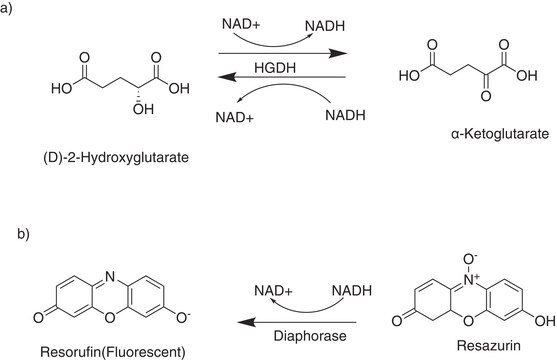MAK189
A-KG Dehydrogenase Activity Assay Kit
Sufficient for 100 Colorimetric tests
Synonym(s):
α-KG Dehydrogenase Activity Assay Kit, α-Ketoglutarate Dehydrogenase Activity Colorimetric Assay Kit, AKGDH Assay Kit, Alpha-Ketoglutarate Dehydrogenase Activity Colorimetric Assay Kit, OGDC Activity Assay Kit, Oxoglutarate Dehydrogenase Assay Kit
About This Item
Recommended Products
detection method
colorimetric
relevant disease(s)
endocrinological disorders, diabetes; orthopedic diseases; neurological disorders; rheumatological diseases; cancer; cardiovascular diseases
storage temp.
−20°C
Gene Information
human ... OGDH(4967)
mouse ... OGDH(18293)
rat ... OGDH(360975)
General description
Application
Suitability
Principle
Kit Components Only
- KGDH Assay Buffer
- KGDH Substrate
- KGDH Developer
- NADH Standard
- KGDH Positive Control
Signal Word
Danger
Hazard Statements
Precautionary Statements
Hazard Classifications
Eye Dam. 1 - Resp. Sens. 1 - Skin Corr. 1B
Storage Class Code
8A - Combustible corrosive hazardous materials
Certificates of Analysis (COA)
Search for Certificates of Analysis (COA) by entering the products Lot/Batch Number. Lot and Batch Numbers can be found on a product’s label following the words ‘Lot’ or ‘Batch’.
Already Own This Product?
Find documentation for the products that you have recently purchased in the Document Library.
Customers Also Viewed
Our team of scientists has experience in all areas of research including Life Science, Material Science, Chemical Synthesis, Chromatography, Analytical and many others.
Contact Technical Service






